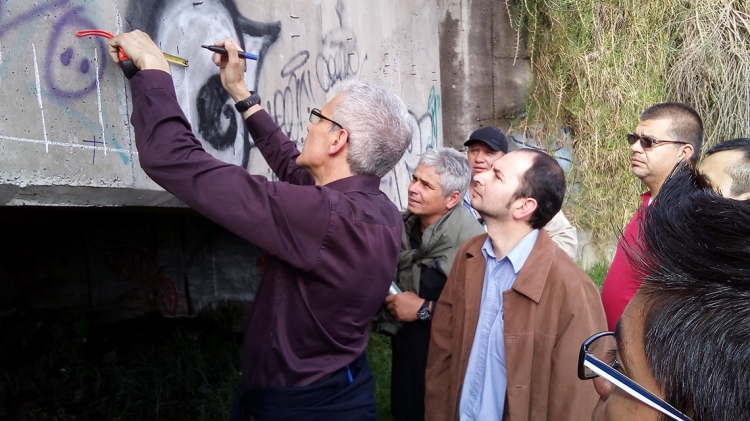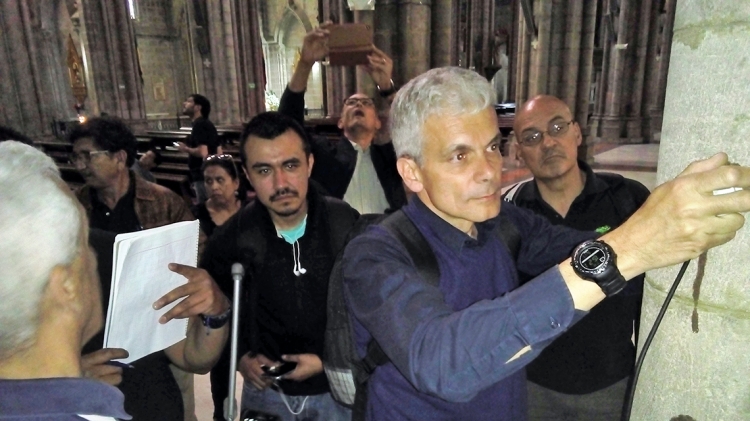An IAEA technical cooperation course on non-destructive testing (NDT) techniques for the evaluation of civil structures, held recently in Quito, Ecuador, will help countries in the Latin America region to develop a cohort of personnel trained and qualified in non-destructive testing in accordance with ISO9712 and ISO17024, and competent to carry out inspections of civil and industrial structures. Non-destructive testing, which includes the use of nuclear techniques, is used to assess the integrity of civic structures and to diagnose the state of industrial components. This can help countries to verify the safety of damaged buildings after emergencies such as earthquakes, floods and cyclones.
The regional training course, organized by the IAEA in collaboration with the government of Ecuador, was held from 14 to 18 May 2018 in the city of Quito at the Army’s Polytechnic School of the University of the Armed Forces of Ecuador. Part of an IAEA technical cooperation project[1], the course was focused on developing the NDT capacities of participating countries, using interactive workshops through which participants had the opportunity to learn about the different methods and techniques used for non-destructive testing relevant to their jobs.
Experts from the Spanish Association of Non-Destructive Testing (AEND) and the Italian Association of Non-Destructive Testing (AIPnD), in collaboration with technical officers from the IAEA, shared their experience in non-destructive testing and explained the scope and limitations of such testing when applied to the diagnosis of civil structures. Bearing in mind existing international regulations, the course also served as a platform to teach various other non-nuclear techniques used to assess damaged buildings that are considered fundamental for inspections of buildings and industrial structures, particularly in emergency situations. These include visual inspection, ultrasound, sclerometric hardness measurement, and the determination of concrete thicknesses using electromagnetic techniques. The training also focused on the evaluation of schools and hospitals, and the general inspection and evaluation of historic buildings.
The course incorporated practical sessions, which were conducted at the Union of South American Nations (UNASUR) headquarters. Experts presented case examples from their countries, demonstrating the correct way to perform the diagnosis and seismic analysis of various old buildings, such as bridges, industrial constructions, palaces and cathedrals.







